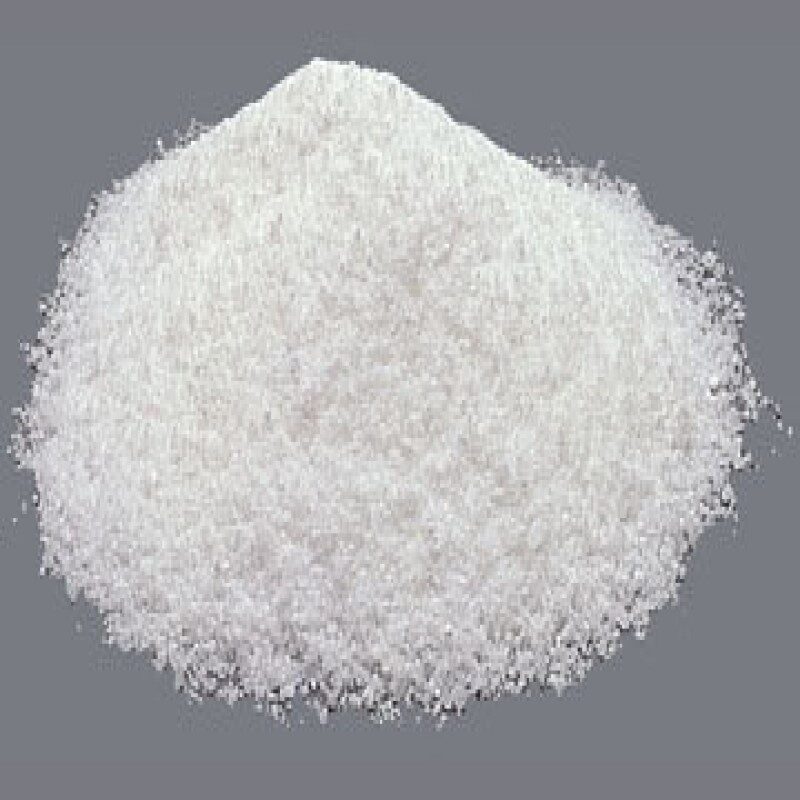Description
Remarks: The material complies as per above specification.
Uses: Calcium Resonium is a type of medicine used to help remove excessive amounts of potassium from the blood. Calcium Resonium contains calcium polystyrene sulfonate which contains calcium atoms. This calcium is swapped for potassium in the body, particularly in the large intestine.
Packing: 25 kg HDPE Bags/HDPE Drum
For AMIZARA SPECILITY CHEMICALS LLP
MSDS
Calcium Polystyrene Sulphonate or Calcium Polystyrene Sulfonate MSDS Sheet, Material Safety Data Sheet
Section 1: Chemical Product and Company Identification
| Product Name & Other Names |
Calcium Polystyrene Sulfonate or Calcium Polystyrene Sulphonate |
| CAS # |
| Relevant uses and uses advised against (if any) |
Industrial use only.. |
| Supplier |
As per letterhead. |
SECTION 2 : Hazards Identification
GHS, Globally Harmonized System Classification in accordance with 29 CFR 1910
Classification according to Regulation (EC) No 1272/2008
| Not a hazardous substance or mixture according to Regulation (EC) No. |
1272/2008. |
| This substance is not classified as dangerous according to Directive |
67/548/EEC. |
Labeling according to GHS & Regulation (EC) No 1272/2008
| GHS Label Elements |
NONE |
| Signal Word |
None |
| Hazards not otherwise classified (HNOC) |
The toxicological properties of this material have not been fully investigated
May causes mild skin irritation.
May causes mild eye irritation.
May cause irritation of digestive tract.
May cause irritation of respiratory tract. |
Precautionary statements:
| P261 |
Avoid breathing dust/fume/gas/mist/vapors/spray. |
| P262 |
Do not get in eyes, on skin, or on clothing. |
| P281 |
Use personal protective equipment as required. |
| P302+P352 |
IF ON SKIN: Wash with plenty of soap and water. |
| P303+P361+P353 |
IF ON SKIN (or hair): Remove/Take off immediately all contaminated clothing. Rinse skin with water/shower. |
| P304 + P340 |
IF INHALED: Remove victim to fresh air and keep at rest in a position comfortable for breathing. |
| P305 + P351 + P338 |
IF IN EYES: Rinse cautiously with water for several minutes.Remove contact lenses, if present and easy to do. Continue rinsing. |
| P337+313 |
If eye irritation persists get medical advice/attention. |
Section 3: Composition / Information on Ingredients
| Product Name & Other Names |
Calcium Polystyrene Sulfonate or Calcium Polystyrene Sulphonate |
| CAS #: |
37286-92-3% by Weight: 90-100%
Mainly water as other substance. |
SECTION 4: First Aid Measures
Always seek medical advice after the first aid treatment.
| First aid |
Wash exposed area with soap and water. |
| Eyes |
: Wash eyes with plenty of water for at least 15 minutes, lifting lids occasionally. Seek Medical Aid. |
| Inhalation |
Remove to fresh air. If not breathing, give artificial respiration. If breathing is difficult, give oxygen. |
| Ingestion |
If swallowed, induce vomiting immediately after giving two glasses of water. Never give anything by mouth to an unconscious person. |
SECTION 5 :Fire and Explosion Data
| Flammability of the Product: |
Non-flammable |
| Products of Combustion |
Calcium oxide with oxides of sulphur, carbon and fumes. |
| Extinguisher Media |
Use media suitable to extinguish surrounding fire. Use alcohol-resistant foam, dry chemical, or carbon dioxide. |
SECTION 6: Accidental Release Measures
Methods and materials used for containment Cleanup procedures and Storage:
| Personal precautions, protective equipment, and emergency procedures |
Ventilate area of leak or spill. Avoid breathing dust/fumes/gas/mist/vapors/spray. Use individual protective equipment (waterproof boots, suitable protective clothing, safety glasses, etc.). Restrict unprotected personnel from the area. Prevent any contact with hot surfaces. Do not approach facing the wind. Do not touch the spilled material. |
| Environmental precautions |
Do not let the product enter drains, soil, or water sources. |
| Small Spill |
Use appropriate tools to put the spilled solid in a convenient waste disposal container. Finish cleaning by spreading water on the contaminated surface and dispose of according to legal authority requirements. |
| Large Spill |
Contain spilled material. Cover with an inert, non-combustible absorbent material, (e.g. sand, earth, diatomaceous earth, vermiculite). Vacuum or sweep-up and remove to an approved disposal container. Finish cleaning by spreading water on the contaminated surface and allow drain as per law. |
SECTION 7:Handling and Storage
| Precautions for safe handling |
Apply according to good manufacturing and industrial hygiene practices. Ensure proper ventilation. Wash thoroughly after handling. Do not drink, eat, or smoke while handling. Avoid contact with skin, eyes, and clothing. Minimize dust generation. Avoid breathing dust/fumes/gas/mist/vapors/spray. Avoid contact with eyes, skin, and clothing. Keep container tightly closed. Avoid ingestion and inhalation. Use individual protective equipment (waterproof boots, suitable protective clothing, safety glasses, etc.). Prevent any contact with hot surfaces. |
| Conditions for safe storage, including any incompatibilities |
Store in cool, dry, and ventilated area away from heat sources and protected from sunlight in tightly closed original container. Keep air contact to a minimum. Store protected from heat, sparks and ignition sources and incompatible materials. Avoid contact with skin and eyes.Avoid inhalation of dust/mist/vapor. Do not store with incompatible materials like strong oxidizing agents and acids. Avoid moisture |
SECTION 8: Exposure Controls/Personal Protection
| Engineering Controls |
Use process enclosures, local exhaust ventilation, or other engineering controls to keep airborne levels below recommended exposure limits. If user operations generate dust, fume, or mist, use ventilation to keep exposure to airborne contaminants below the exposure limit. |
| Personal Protection |
Safety glasses. Lab coat. Dust respirator. Be sure to use an approved/certified respirator or equivalent Gloves. |
SECTION 9: Physical and Chemical Properties
| Appearance |
Cream to light brown solid. |
| Odor |
Not available. |
| Odor threshold |
Not available. |
| pH |
Not available. |
| Relative density |
around 0.7 to 0.8 |
| Melting Point/freezing point |
Not available. |
| Initial boiling point and boiling range |
Not available. |
| Flash point |
Not available. |
| Auto-ignition temperature |
Not available. |
| Decomposition temperature |
Not available. |
| Upper/lower flammability or explosive limits |
Not available. |
| Vapor pressure |
Not available |
| Vapor density |
Not available. |
| Evaporation rate |
Not available. |
| Flammability (solid, gas) |
Not available. |
| Partition coefficient |
n-octanol/water:
Not available. |
| Solubility(ies) |
Insoluble in cold water and alcohol. |
| Viscosity |
Not available. |
SECTION 10. Stability and Reactivity Data
| Stability |
Stable under ordinary conditions of use and storage |
| Conditions of Instability |
Incompatible materials |
| Incompatibility with various substances |
Reactive with oxidizing agents. |
| Corrosivity |
Non-corrosive in presence of glass. |
| Polymerization |
Will not occur. |
SECTION 11: Toxicological Information
| Toxicity to Animals |
LD50 (Oral) Rat >5000 mg/kg |
| Carcinogenicity |
Not available. |
| Mutagenic Effects |
Not available. |
| Teratogenic Effects |
Not available. |
| Developmental Toxicity |
Not available. |
| Reproductive Effects |
No information available. |
SECTION 12. Ecological Information
| Ecotoxicity |
The product is not expected to be harmful to marine life. |
| Persistence and Degradability |
No information available. |
| Mobility |
No information available. |
| Bioaccumulation/ Accumulation |
No information available. |
| Results of PBT and vPvB assessment |
No data available for assessment. |
SECTION 13. Disposal Considerations
| Waste Disposal |
Waste must be disposed of in accordance with federal, state, and local environmental control regulations. |
SECTION 14. Transport Information
| DOT (US)& ADR/RID |
Not dangerous goods |
| IMDG |
Not dangerous goods |
| IATA |
Not dangerous goods |
SECTION 15. Regulatory Information
USA Regulations :
| OSHA Hazards |
No known OSHA hazards |
| SARA 302 |
No chemicals in this material are subject to the reporting requirements of SARA Title III, Section 302. |
| SARA 313 |
This material does not contain any chemical components with known CAS numbers that exceed the threshold (De Minimis) reporting levels established by SARA Title III, Section 313. |
SECTION 16. Additional Information
Disclaimer:
Our company provides this MSDS sheet in good faith but makes no representation as to its comprehensiveness or accuracy. This SDS sheet is intended only as a guide to the appropriate precautionary handling of the material by a properly trained person using this product. The above information has been compiled from various sources and has the possibility of discrepancy and being out-dated information. Individuals receiving the information must exercise their independent judgment and do further search in determining its appropriateness for a particular purpose. In no case shall our company be liable to loss or damages by the product user.




